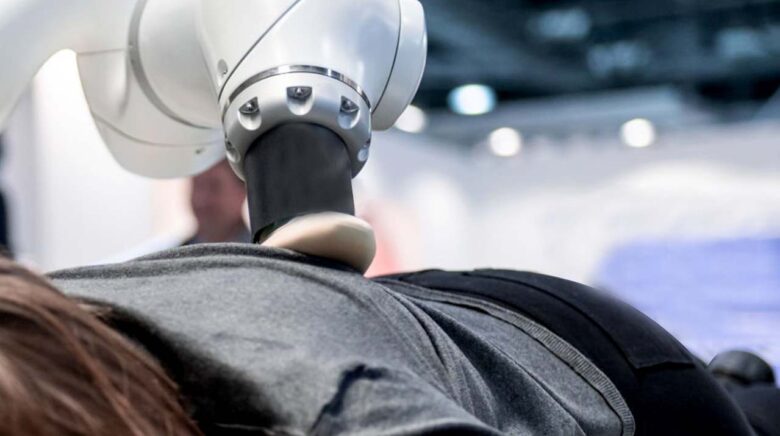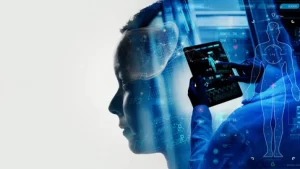For many people who have had an injury, surgery or long-term illness, physiotherapy is an important part of recovery and rehabilitation. A common approach to physical therapy involves manual assessment, taking subjective notes, and developing a comprehensive treatment plan. But the rise of artificial intelligence (AI) in this area makes treatments more precise, personalized and effective. This 900-word article describes how artificial intelligence is transforming physiotherapy by providing new answers and making things better for patients.
Common Methods of Performing Physical Therapy:
In the past, physical therapy relied on the therapist’s knowledge and experience to assess a patient’s condition, develop a treatment plan, and focus on their progress. So far, this approach has worked, but it’s not perfect when it comes to accuracy, personalization, and tracking and analyzing large amounts of patient data over time.
What Role Does AI Play in Physiotherapy?
Artificial intelligence is changing physical therapy in several important ways. It can look at large amounts of data and discover trends in it. It makes assessing patients, planning treatment and tracking their progress objective, fast and data-based.
AI Assesses Patients and Plans their Care:
One of the main ways artificial intelligence is used in physiotherapy is to aid in the initial assessment and planning of treatment. Tools and systems powered by artificial intelligence can provide highly accurate insight into a patient’s strength, flexibility, movement patterns and other physical characteristics. Once this information is obtained, a very specific treatment plan can be developed based on the unique needs and abilities of each individual.
Sports Analytics and Wearable Technology:
An important part of current physiotherapy is wearable technology with built-in sensors and artificial intelligence. These gadgets provide real-time observation of a patient’s movements and provide useful information about their flexibility, balance, gait and muscle activity. Artificial intelligence algorithms look at the data collected by these wearable devices to provide therapists with information about patient health and progress. This allows them to make immediate changes to the treatment plans.
Creating Virtual Reality and Games:
Virtual reality (VR) and game-based learning (gamification) are becoming new and useful tools in physiotherapy. They make exercise more fun and keep patients engaged, making them more likely to stick to their treatment plan. VR systems can make situations and challenges feel like they are happening in real life, allowing patients to practice certain skills in a safe environment. Artificial intelligence makes these systems better by changing tasks based on patient performance.
Predictive Analytics for Healthcare Prevention:
Artificial intelligence is not only used for treatment; it can also be used for preventive care because it can make predictions. Artificial intelligence can look at patient data over time to find risk factors or early signs that an accident or condition may occur. This allows rapid medical assistance to be provided. This part of artificial intelligence is especially useful in sports therapy, where identifying problems early can prevent injuries from getting worse.
Remote Monitoring and Remote Rehabilitation:
Telerehabilitation, which treats patients remotely, has become increasingly popular since the COVID-19 pandemic. Artificial intelligence is very important in this field, as it allows doctors to remotely observe and analyze the movement and growth of patients on a digital platform. This not only makes physical therapy easier to perform but also allows for continuous observation and modification of treatment plans based on the data collected in real time.
Questions to Think About and Ethical Issues:
Integrating artificial intelligence into physical rehabilitation will not be easy, although it can be useful. It is important to ensure that AI systems are accurate and reliable, as flawed research can result in treatment plans that are ineffective or even harmful. As always, privacy and the protection of patient data are major issues in digital healthcare.
Additionally, it can be difficult to get AI tools to work well with the work physical therapists already do. Those working in the field must learn how to properly use these new tools without losing sight of the human side of care.
The Future Prospects of AI in the Field of Physiotherapy:
With artificial intelligence being integrated into the field of physical rehabilitation, the future looks bright. As artificial intelligence continues to develop, it has the potential to be applied to physical therapy in more advanced ways. We can expect AI tools that are easier to understand and use, more accurate tests and predictions, and more effective treatment plans. When artificial intelligence is combined with other technologies, such as robotics and advanced imaging, it will make physiotherapists even more useful.
Artificial intelligence is also expected to play an important role in research, helping to develop new medicines and ways to recover from injuries based on insights from data. This allows physiotherapy to be based on more data, continuously improving the standard of care.
Conclusion:
Artificial intelligence will transform physiotherapy by making rehabilitation programs more accurate, personalized and successful. Artificial intelligence harnesses the power of data analytics, wearable technology, virtual reality and predictive analytics to help doctors provide better care. Despite integration, accuracy and ethical concerns, artificial intelligence has the power to have a dramatic impact on patient performance. As technology changes, the way we perform physical therapy will also change. This will make it easier for people to get out, have more fun and be better able to meet their personal needs.
FAQs:
1. What are the benefits of artificial intelligence compared to traditional physiotherapy?
Artificial intelligence makes physiotherapy objective, efficient and data-driven. It improves the accuracy and personalization of patient assessment and treatment planning, as well as the ability to track and analyze complex patient data over time, something traditional methods may not be able to provide.
2. How can artificial intelligence help physical therapy patient assessment and treatment planning?
Artificial intelligence-powered tools can accurately assess a patient’s strength, flexibility, and movement patterns. Use data to create personalized treatment plans based on an individual’s needs and talents to optimize treatment success.
3. How can wearables and motion analytics impact AI-powered physical therapy?
Wearable devices equipped with sensors can instantly track a patient’s range of motion, gait, balance and muscle activity. Artificial intelligence systems examine this data, allowing therapists to dynamically change treatment options based on the patient’s health and development.
4. Can artificial intelligence in physiotherapy help prevention?
Preventive care for physiotherapy can use predictive analytics based on artificial intelligence. By evaluating patient data over time, artificial intelligence can detect injury or disease at an early stage, enabling early intervention. Exercise therapy benefits from identifying potential problems early and thus preventing more serious injuries.
5. What are the problems and prospects of AI in physiotherapy?
Data privacy and security, the accuracy and reliability of AI systems, and integrating AI technology into physiotherapists’ workflows without losing the human touch are all challenges. Expect increasingly sophisticated applications, better assessments and predictions, and new treatments and rehabilitation procedures based on AI-driven physiotherapy insights.



